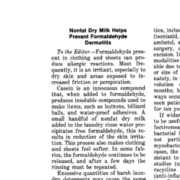Late Delayed Reactions – 13%
“Patch test readings are usually performed on day 2 (48 hours) and day 4 (96 hours). However, reports in the literature identify delayed allergy to metals, corticosteroids, antibiotics, some preservatives, acrylic and methacrylic monomers and p-phenylenediamine.”
This article discusses 203 patients that were patch tested to the British Society for Cutaneous Allergy standard series and twenty-six patients (12.8%) had new positive reactions on day 7 (168 hours), Including “mercury 0.5% (2/26); cobalt chloride 1% (2/26); colophony 20% (2/26); disperse blue mix 106/124 1% (2/26); preservatives (4/26) that included Methylchloroisothiazolinone/ methylisothiazolinone, sodium metabisulfite, and diazolidinyl urea; fragrances (7/26); and gentamycin sulfate 20% (1/26).” http://www.ncbi.nlm.nih.gov/pubmed/24030365
Late delayed reactions have been reported also in patch tested children in the US – “Twenty-five of the 38 children (66%) had a positive reaction at 48 hours; 32 children (84%) had a positive reaction at 72 hours (day 3); 19 children (50%) had a positive reaction at 168 to 216 hours (day 7-9). Of those 19, 16 (42%) had persistent reactions, while 5 children (13%) had new late delayed reactions. Among the new late delayed reactions, there were six allergens identified, four of which were considered of probable clinical relevance.” (the four with probable relevance were: Formaldehyde and formaldehyde related chemicals: Formaldehyde, Q15, Diazolidinyl urea, p-tert-butyl formaldehyde resin). http://www.ncbi.nlm.nih.gov/pubmed/21208272







